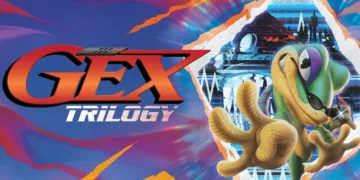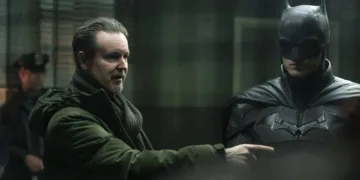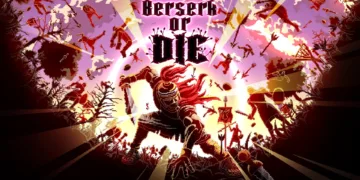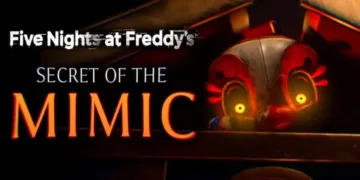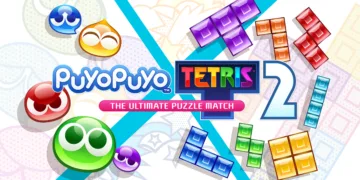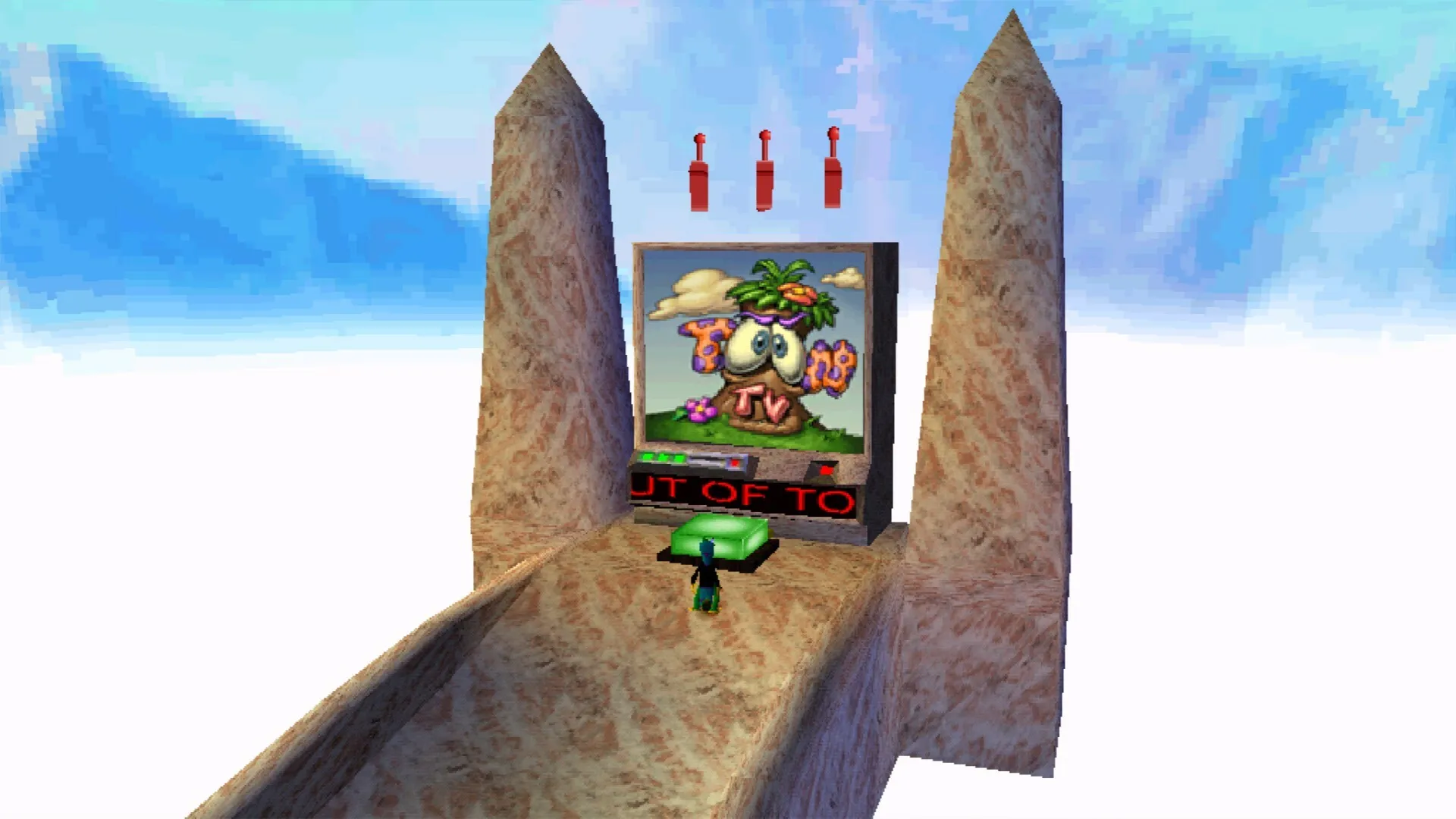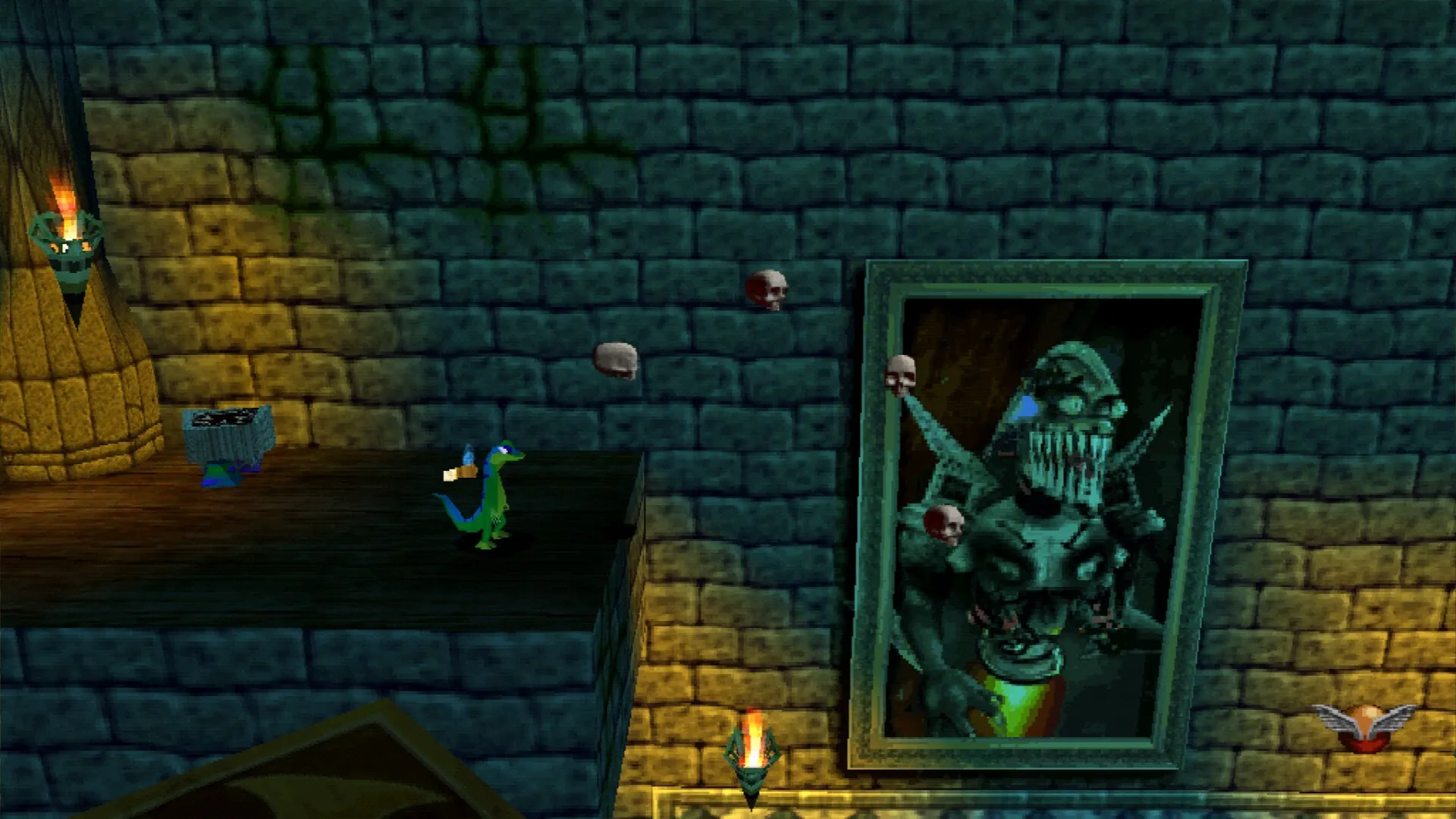Among the legion of mascot platformers that defined 90s gaming, Gex stood out. He wasn’t just an animal with an attitude; he was a walking, talking embodiment of the decade’s obsession with television and pop culture.
The GEX Trilogy resurrects this smart-mouthed gecko, packaging his three classic adventures for modern systems and audiences. The premise is simple and consistent across the series: Gex, a chill gecko relaxing in his home, is unwillingly pulled into the Media Dimension by the villainous Rez.
This narrative serves as the perfect vehicle for a string of parody-focused worlds, from spooky cemeteries to cartoon wonderlands and sci-fi landscapes. Playing this collection feels like opening a time capsule, offering a direct look into the design philosophies and specific brand of humor that characterized a very particular moment in video game history.
The 2D Foundation
The first Gex establishes the formula with a 2D side-scrolling adventure that borrows its visual aesthetic from the pre-rendered look popularised by games like Donkey Kong Country. The gameplay is built on a simple yet effective set of skills.
Gex uses a sharp tail whip to dispatch enemies and a quick tongue lash to slurp up the flies that grant temporary power-ups, such as flaming projectiles or an electrical tongue. His most defining trait is the ability to cling to and scale most walls and ceilings. This gives levels a verticality that encourages thorough exploration, as secrets are often tucked away on high ledges or hidden behind false walls. Progression is not a simple A-to-B journey.
The game’s structure demands that players find a hidden TV remote in each stage to unlock the next, a design that feels more akin to a scavenger hunt than a traditional platformer. The Media Dimension theme allows for a fun variety of worlds, from the iconic opening cemetery levels to zones based on kung-fu movies and jungle adventures.
The controls, however, feel very much of their time. Jumping is precise and lacks modern conveniences like coyote time—the brief window to jump after running off an edge—which demands a deliberate approach. This stiffness, combined with instant-death spikes and bottomless pits, creates a specific old-school challenge.
The Polygonal Playground
With Gex: Enter the Gecko, the series made the then-mandatory leap into 3D. Following the template set by Super Mario 64, gameplay shifts to hunting for collectibles within open-ended environments accessible from a central hub world.
This first 3D entry holds up remarkably well, with contained, room-based levels that are fun to explore. A significant enhancement in this collection is the remapping of the camera to the right analog stick, a modern comfort that makes navigating these worlds far less frustrating than it was with the original shoulder-button controls.
The third game, Gex 3: Deep Cover Gecko, builds upon its predecessor’s foundation with more technically ambitious design. Levels, launched from a Wayne Manor-like hub complete with a tortoise butler, are larger and more intricate.
They are filled with a greater variety of activities, including snowboarding, swimming, and clever platforming puzzles based on weight and inertia. It also introduces costume changes that grant Gex new powers, like a pharaoh or a mecha robot.
While the camera is improved and the scope is broader, some additions have aged poorly, particularly the awkward live-action video segments featuring Agent Xtra. Both 3D titles retain Gex’s core moveset of tail whips and tongue lashes, but wall crawling is now restricted to specific, marked surfaces, transforming it from a constant traversal option into a more situational puzzle-solving tool.
A Wisecracking Time Capsule
The defining element of the Gex series is its title character, a couch potato gecko whose personality is built entirely on his media consumption. The games are flooded with the voice of comedian Dana Gould, who delivers a constant barrage of one-liners and cultural references meant to evoke a certain kid-appealing, gross-out edginess popular at the time.
This is what gives the series its identity, but it is also its most dated feature. The humor is a snapshot of the late 90s, with jokes about Jerry Springer and impressions of movie stars that will be lost on many and familiar to a fault for others. The quips, while numerous, become highly repetitive over the course of three games.
Hearing the same Austin Powers impression multiple times within a single level can test your patience, turning a feature that was once the main selling point into a potential annoyance. This relentless stream of commentary is an inseparable part of the experience, a pillar of the game’s identity that will either charm you with its nostalgic cheekiness or wear you down with its incessant repetition.
The Modern Trilogy Treatment
This collection is far more than a simple port of old games. The quality-of-life improvements are substantial, making the titles much more approachable for a new generation. The two 3D games benefit from true widescreen support, the camera controls are modernized for dual-stick controllers, and players can now save anywhere.
This last feature is a massive upgrade for the first game, which originally used a cumbersome password system doled out only after completing an entire world. A helpful rewind function can instantly erase frustrating mistakes, taking the sting out of the original’s more punishing platforming sections.
Beyond these gameplay enhancements, the package is loaded with bonus content that celebrates the series’ history. There is a music player, extensive galleries of concept and box art from around the world, and full scans of the original manuals.
The clear highlights are the newly filmed, in-depth interviews with Dana Gould and rare prototype footage of the never-released Gex Jr. game. While this collection focuses on the PlayStation versions, omitting unique levels from the N64 ports and the entirely different Game Boy Color titles, it stands as a definitive and respectful preservation effort for the core trilogy.
The Review
GEX Trilogy
The GEX Trilogy is a masterfully executed act of game preservation. While the games themselves are solid platformers burdened by dated mechanics and humor that is firmly stuck in the 90s, the collection itself is exemplary. The modern quality-of-life enhancements make the titles more playable than ever, and the wealth of bonus content offers a fascinating look into a bygone era of gaming. This package is a lovingly crafted time capsule that perfectly resurrects a forgotten mascot, warts and all.
PROS
- Excellent modern enhancements like widescreen and save-anywhere.
- Three distinct platformers offering significant playtime.
- A fantastic collection of insightful bonus content.
- Effectively preserves a notable piece of gaming history.
CONS
- Core gameplay mechanics, especially in the first game, feel stiff.
- Humor and pop culture references are extremely dated.
- The constant, repetitive voice lines can become grating.
